Ich, also known as ick, is one of the most prevalent diseases in the aquarium hobby and every fish keeper will deal with it at least once.
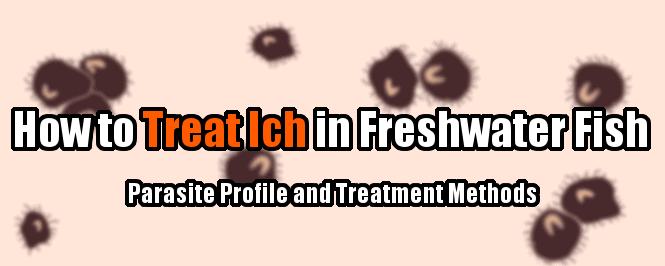
Figuring out how to actually treat Ich will entirely depend on the type of freshwater fish you keep and the severity of the infestation.
Adding salt and raising the heat is usually recommended but will that be enough?
Can you cure Ich without using medicine and will the fish be able to naturally survive the pathogen on their own?
For how long should you be treating it anyway?
To prevent its high mortality rates you should learn how to cure freshwater fish of the Ich parasite fast, and also apply the best treatment strategy for your aquarium setup.
To properly explain how to do that, however, you first need to make sure it’s really Ich you’re dealing with and understand what causes it.
What is freshwater Ich and what causes it?
Before treating ich you need to get familiar with why it occurs and the reasons behind it.
It’s a very common disease that’s easily treatable as long as it’s diagnosed in its early stages. Consulting with a vet is the best and most accurate way to diagnose a sick fish, so keep that in mind.
That being said, here’s what causes Ich in freshwater aquarium fish:
In freshwater fish, the disease known as Ich or Ick is caused by a protozoan parasite called Ichthyophthirius multifiliis. This single-celled parasite forms cysts under the skin of fish where it feeds on their flesh. The cysts appear as small white spots that are randomly distributed across the fish’s body.
Ich cysts appear as small white spots that are randomly distributed across the fish’s body, fins, and tail.
Each cyst is raised with a diameter of up to 1 mm or 0.04 inches and looks like a small white crystal of salt or sugar.
For this reason, Ich is informally popular as White Spot Disease.
Stress from poor water quality, temperature fluctuations, relocation, and aggressive tank mates are all factors that contribute to parasitic outbreaks in home aquariums or ponds.
When there’s a visual manifestation of ich in fish, more often than not the white spots will cover the fins of the specimen before other body areas. This is because these locations have less protective mucus and therefore are easier for the free-floating parasites to attach to.
Bear in mind that this external parasite sometimes attacks the gills and the inside of the mouth of the fish first, in which case the white dots will not be visible before the disease spreads.
Here’s what the white lesions of Ich look like on the fins and tail of this goldfish:

See how the white dots can cover other body areas of freshwater fish:
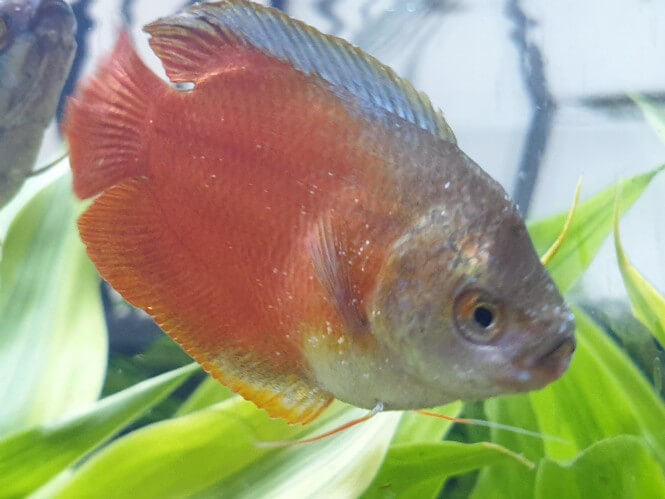
And a more severe case of white spot disease affecting goldfish:
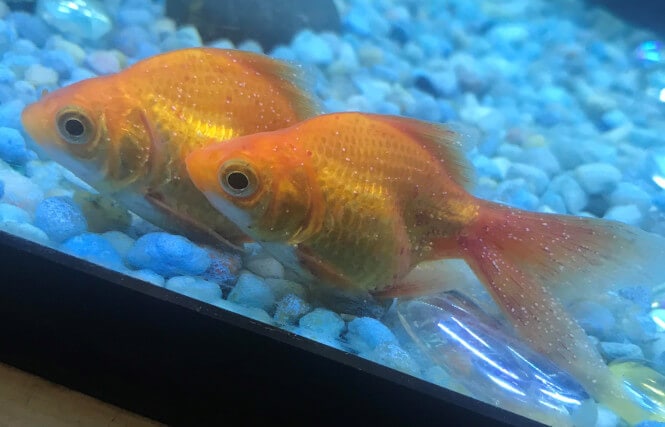
What signs and symptoms identify the protozoan parasite Ich?
When affected by ich, the sick pet fish can show behavioral cues before the appearance of the tiny white nodules. If the parasite has only invaded the gills of the fish it will be invisible to the naked eye, in which case a diagnosis can still be made based on a change in behavior.
In this case, fish will develop behavioral symptoms 1 to 2 days after being exposed to the parasite.
That being said, the full list of signs and symptoms of freshwater Ich includes:
- A fish covered in small spots that resemble grains of salt and appear to be white in color.
- Scratching against surfaces and erratic dashing.
- Rapid breathing and gill movement.
- Clamped fins.
- Staying near the water surface as if there’s not enough oxygen in the aquarium.
- Lethargy and lack of energy.
- Reduced appetite or a complete loss of interest for food.
- Pale coloration.
Take a look at this Cardinal tetra displaying a clamped dorsal fin, pale coloration and multiple white cysts on its tail, fins, and body:

Aquarium fish will not be able to survive Ich without adequate treatment, because the parasites will keep reinfecting their fish host until they overwhelm and kill it.
In order to successfully treat and cure Ich, you’ll need to target the parasite in the only vulnerable stage of its life cycle.
Life cycle and vulnerable stages of Parasitic Ich
Ich cannot be cured at any given moment.
When the parasite is under the skin of the host, it has a protective cyst that shields it from medication.
The dose of medicine needed to treat the parasite that’s already invaded a fish will prove lethal to the fish itself.
The life cycle of Ich consists of 3 consecutive stages:
- Trophots that feed on the flesh of fish. In this stage, the parasite lives inside of its fish host and feeds on the surrounding tissue.
- Reproductive Tomonts that have exited the host. The Tomonts fall off of the host and transform into protective cysts that attach themselves to surfaces such as plants, substrates, and rocks. Tomonts are responsible for giving birth to the next generation of daughter parasites called Tomites.
- Free-floating Theronts. In this stage, the parasitic Tomites hatch from their Tomont cyst and become infective Theronts. Theronts seek a host by roaming the water column of the aquarium.
The life cycle of parasitic Ich in freshwater fish can be visually represented like so:

When the parasite is inside of a host or in its Tomont phase it’s sheltered by a cyst, and no medication or treatment can kill it.
The only time of the cycle at which Ich is vulnerable to treatment is in its free-floating Theront stage.
Theronts are not protected against chemical or salt treatments and can be eradicated with a form of medication.
This means that if you remove every infected fish from an aquarium that has undergone an Ich outbreak you can realistically expect the water inside to eventually clear from parasites on its own.
It’s important to remember that the speed at which the life cycle of the Ich parasite unfolds is highly temperature-dependant.
Knowing the duration of its life cycle, and the temperatures that correlate with that, can give us an estimation of how long an Ich outbreak should be treated:
Ich stays as trophonts on fish for 3 to 7 days at its optimum temperature window of between 70 and 77°F or 21 and 25°C, but up to 10 days in water temperatures of 15°C or 59°F.
The trophont then exits its host and builds a protective capsule called a Tomont while falling on the bottom for a short period of time.
The Tomont then spends between 20 and 24 hours producing new daughter parasites known as Tomites at a temperature range of 80°F to 86°F or 27°C to 30°C.
The Tomites will hatch as Theronts and swim in search of a new host for 1 to 2 days before dying out.
The time in which Ich completes its external life cycle is 3 to 4 days at a temperature of between 21 and 25°C or 70 to 77°F, excluding the trophont stage.
To complete its whole life cycle, including the period when feeding inside of its host, Ich takes from 6 to 11 days at a temperature range of 72 to 80°F or 21 to 27°C. Therefore, If it’s really Ich you’re dealing with, a treatment to full recovery should last as long as 2 weeks at relatively higher water temperatures.
How to treat an Ich outbreak in your freshwater fish?
When you’re dealing with Ich, you should apply the treatment to all of the fish in the affected aquarium.
This is because the parasite is highly contagious and it is very likely that each fish sharing the same tank has already contracted it.
Though this is not necessary for the eradication of Ich, there are a couple of reasons why you may want to do so.
Setting up a separate hospital tank for treating fish infested with Ich may be beneficial when:
- You have a planted tank – unless really hardy, most freshwater aquatic plants won’t do well in increased water salinity.
Since you’ll likely be using salt in the treatment, you may want to spare your more sensitive plants the damage.
By relocating the infected fish elsewhere the Ich parasites in a planted aquarium will not find a host to complete their life cycle, dying out as a consequence.
For this reason, moving all ill fish to a separate hospital aquarium is arguably the best treatment for Ich in a display planted tank.
- You have invertebrates such as snails and shrimp in the aquarium – some Ich medicine will not be invertebrate-friendly. This is not always the case, and I will clarify which is and which isn’t.
- The aquarium is large but has very few fish in it – in this case, you’ll need a lot more resources to treat the whole volume of water.
Relocating the ill fish to a smaller hospital tank will make carrying out the treatment easier while starving the Ich parasites in the main tank.
- The fish develop secondary bacterial infections – Since the Ich parasites feed off of the host’s flesh, each white spot leaves behind miniature wounds that have no protective slime coat on them.
This makes each Ich survivor prone to lethal bacterial or fungal infections.
Each medicine that treats bacterial infections will inevitably damage the biofilter of a display aquarium and hurt the established nitrogen cycle.
- You want to avoid discoloration of aquarium sealants and ornaments – malachite green, which is often recommended as the best treatment for eradicating Ich is actually a dye.
Carrying out a treatment in the main fish tank may result in blue discoloration of aquarium equipment, silicone, and decorations.
- Calculating the right dose for medicine – when treating Ich it is very important to properly measure out the needed dose of medication.
A hospital tank usually has a bare bottom and no decor that would displace water volume.
When treating fish in a display tank you’ll have to take into account the internal decor such as rocks, live plants, submersible aquarium equipment, etc. when calculating dosage.
Wrong calculations can contribute to fish dying from a medicine overdose and not the actual parasitic outbreak.
With this out of the way, you can now start the treatment of the ill fish.
Follow these exact steps to treat and cure Ich in freshwater fish:
- Gradually Increase the temperature of the aquarium’s water until it reaches 86°F.
To get rid of Ich fast and on time you should increase the temperature by about 2 degrees every 3 hours which also helps to avoid a heat shock for the fish.
This will speed up the parasite’s life cycle to the point of reaching its Theront phase, in which you’ll be able to treat it because the progression of the infection and the rate at which white spots appear on a fish depends on water temperature.
Another reason for this is because at a water temperature of 86°F (or 30°C) the tomont cysts produce roughly 42% fewer free-swimming theronts, than at 77°F or 25°C. Therefore raising the temperature in a freshwater aquarium significantly helps when treating fish with Ich.
Bear in mind that not all fish will be able to tolerate such levels of heat.
Only raise it as high as these types of fish can tolerate.
High heat alone can cure freshwater fish of a weaker strain of Ich that’s spotted in its early stages.
However, a heat-only treatment of Ich is only adequate in tropical aquariums where fish prefer warmer water.
- Put in an airstone to increase the oxygen level in the water.
There’s an inverse relationship between the temperature of a liquid and how much gas it can contain.
Not only that, but some Ich medications will also take up oxygen from the water.
A strong airstone per 20 to 30 gallons of aquarium water is desirable.
- Add 1 teaspoon of non-iodized salt per 1 gallon of water.
You need to use salt that has no additives in it. Aquarium salt is a common choice, but I prefer Kosher salt because it is pure and way more inexpensive.
To treat Ich with salt you should calculate the quantity required for the whole tank volume and add it to a small amount of aquarium water in a separate container.
Stir until the salt has completely dissolved and slowly add the saline solution to the fish tank.
Mind that the salt treatment is not a viable strategy for curing Ich in a freshwater planted tank, because the more sensitive live plants may perish.

Also, using salt will be counterproductive if you keep scaleless freshwater fish and invertebrates that are sensitive to water salinity such as loaches, corydoras, tetras, and snails.
- Medicate with Malachite Green and Formaldehyde.
Both malachite green and formaldehyde are among the best choices of medication against Ich, because of their strong parasiticidal properties.
Using them in combination with the other steps of this guide can treat some of the most resistant Ich strains.
There are a plethora of aquarium-grade medications advertised for Ich treatment, but only a handful contain these actual ingredients.
For this reason, some commercially available products that are among the best choices for treating Ich in freshwater fish would be API Super Ick Cure, Seachem ParaGuard, Hikari’s Ich-X, Kordon Rid-Ich Plus, and Weco’s Nox-Ich.
Hikari’s Ich-X and Kordon Rid-Ich Plus both contain formaldehyde and malachite green and are particularly effective against severe Ich infestations (links point to their respective Amazon pages). Personally, I prefer Ich-X because I’ve had good results with it, but Kordon’s Rid-Ich Plus costs less and I haven’t heard a complaint as long as the instructions were properly followed.
When used correctly both medicines will be safer than most for invertebrates and scaleless fish but bear in mind that, though rarely, deaths do happen.
The other products I mentioned contain malachite green and a blend of supplemental ingredients.
They are to be used for curing less severe Ich infestations.
Weco Nox-Ich is a sound choice of medicine in these cases as it contains only malachite green and a little bit of salt, but the others would likely work too. Whatever medication you decide on, know that malachite green will definitely stain aquarium ornaments and silicone blue as it is a dye.
Also, when measuring the drops of medicine try to take into account the internal decor of the aquarium.
An empty 100-gallon aquarium with a bare bottom holds more water volume than a 100-gallon tank with rocks, plants, and a few inches of substrate.
When calculating the dosage take these into account in order to avoid overdosing, as this is the most common mistake when treating Ich with chemicals.
You can likely find most of these chemicals in your local fish store, and you can definitely find them online.
I usually keep a spare bottle in my first aid aquarium kit, but when I’m out I prefer to order mine online.
The products get delivered by the time I’ve finished tweaking the water temperature in the aquarium.
How you obtain the product is not of importance.
- Change 25% of the aquarium water in between medication.
Perform a 25% water change with each dose of your medication of choice, unless its instructions state otherwise. Make sure the temperature of the new batch of water matches the one in the aquarium, or the water change may prove stressful to your fish.
- Remove any form of chemical filtration such as Activated Carbon.
Activated carbon will chemically remove any form of medicine from aquarium water.
Remove this type of media from your filter, without stopping the filter itself.
Discontinue running any UV sterilizers too, as these will also render the medication ineffective by altering its molecules.
- Treat any secondary bacterial or fungal infections if they appear.
The external parasite often leaves fish with miniature open wounds where the white spots were on their skin, fins, or gills.
This invites other ill-meaning bacteria or fungi, which could try to attack the weakened fish.
It’s important to monitor the survivors for such secondary infections and treat them accordingly.
- Add garlic guard or garlic juice to boost the immunity of your fish.
Battling ich puts fish under stress and takes a serious toll on their immunity. By supplementing your fish’s diet with garlic, you’ll reduce their levels of stress, and boost their immunity.
You can do this by either purchasing a commercial product like Seachem’s Garlic Guard or making your own garlic juice. Either way, you’ll need to add the garlic to your fish’s food roughly 3 times a week.
- Deep clean the substrate to remove the spores. (optional)
If you want to get rid of ich without using any medication, then you’ll have to vacuum the substrate to manually remove the spores.
Once ich enters its second stage, use a vacuum and plunge its gravel tube into the bottom of the aquarium until all the debris lifts.
Then move the tube about an inch and repeat until you clean the entire substrate.
In case you’re using sand as a substrate, simply clean over its surface.
Unlike with gravel, the debris that falls on sand stays on top of it so there’s no need to clean the substrate all the way through.
After you’ve cleaned the substrate, you’ll need to monitor the ammonia levels in the upcoming days since some of the beneficial bacteria in your aquarium subside in the substrate.
As mentioned above, treating Ich takes up to 2 weeks until its complete eradication, depending on water temperature.
This period will be sufficient for the parasites in a display aquarium to perish if Ich-infected fish are being treated in a separate hospital tank.
After the treatment you can resume the activated carbon media to get rid of any water discoloration and leftover medicine.
When should you reach to chemicals and medication for Ich treatment?

Many people would likely feel hesitant to use chemicals on their aquarium pets.
They become toxic in large doses, though any manufacturer of a medicine designed to treat Ich will take this into account when formulating the instructions for use.
There are times, however, when using chemical medication for treating this external parasite makes perfect sense.
Perhaps, the best argument here is that strains of Ich mutate with time and what natural methods used to cure them 20 years ago may not be viable today.
Using heat as a sole treatment is often advocated by well-meaning fish keepers, but this is not guaranteed to cure fish of more resistant strains of Ich.
However, there are reported cases of a more resistant Ich strain causing deaths in freshwater fish at a water temperature of 92°F (33°C).
Another case in which heat alone may not be a viable option for your aquarium is when you keep cold-water fish.
Unless extremely adaptive, such fish may not be able to tolerate temperatures of 86 °F.
The immune system of cold-water fish species gets compromised at higher water temperatures, which is very undesirable when fighting off external parasites.
On the other hand, using salt may be counterproductive when treating scaleless fish, because most of these species are very sensitive to water salinity.
This means that each following attempt to treat Ich solely with salt in the same aquarium will be less effective than the previous one.
In the aforementioned cases using a chemical medicine as a cure makes sense and it’s completely justified if you’d like to prevent (further) fish deaths.
It’s important to understand that mutations and developed resistances mean that we’re not all dealing with the same strain of Ich at any given time.
In fact, a new strain of freshwater Ich that actually reproduces inside of its fish host has been described. It’s referred to as Neo Ich and it’s caused by Neoichthyophthirius schlotfeldti.
At this point of mutation, the strain becomes untreatable, because it has no vulnerable Theront stage once it enters a host.
Can humans get the Ich parasite from infected fish?
There are no reports of people getting Ich from infected fish and the parasite is not shown to be infectious to humans.
However, it has been suggested to wash your hands if they were in contact with Ich-populated water as to not spread it to your other aquariums.
Also, any aquarium equipment that has been in contact with untreated water should never be used in other healthy fish tanks.
What are the ways to prevent future Ich outbreaks?
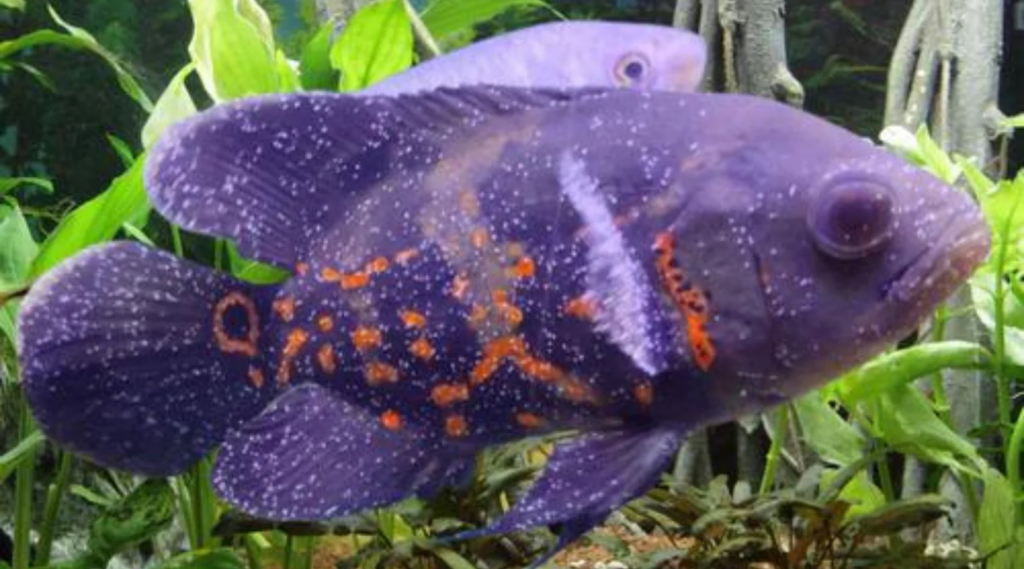
To effectively prevent future outbreaks of Ich, stress levels in fish should be reduced down to a minimum.
A healthy fish is actually able to fight external parasites on its own.
However, as soon as stress factors are introduced, the fish’s immune response becomes weakened and makes its body vulnerable to diseases and parasites such as Ich.
Stress factors that commonly contribute to a weak immune system in aquarium fish are:
- Prolonged exposure to nitrate levels of over 10 ppm in the water.
- Water temperature fluctuations such as the ones happening between day and night in Spring and Fall.
- Shipping from the store.
- Incomplete nitrogen cycle, causing ammonia and nitrite levels to raise.
- Overcrowding the aquarium with fish.
- Fin-nipping and chasing by aggressive tank mates.
- Lack of hiding places and decor, such as live plants and rock caves.
- Tapping on the glass of the aquarium too often.
- Low oxygen levels in the water.
- An improper diet.
That being said, to prevent Ich outbreaks in a freshwater aquarium you will have to:
- Put new fish under quarantine for at least 2 weeks.
Set up a quarantine tank and monitor the new additions for 2 weeks if you keep tropical fish and 3 weeks if you keep sub-tropical species.
Often Ich is passed to a home aquarium from a stressed new fish that has recently been brought from a pet store.
The quarantine tank can also be used for evaluating the safety of new aquatic plants and other decorations as these may carry reproductive Ich cysts on them.
- Maintain a proper fish diet.
Doing research on a healthy diversified diet for the fish you keep will result in longer lifespans and a reinforced immune system.
- Run a UV sterilizer once every 3 days.
Having set an adequately chosen UV sterilizer is a very effective preventive measure against pathogenic parasites such as Ich.
You can run one unit on either your display tank or your quarantine tank.
The water sterilizer’s strength and flow rate are directly related to the size of an aquarium in terms of efficiency. To learn more about picking the best UV sterilizer for your fish tank click here.
- Keep the water parameters in check.
Use a liquid test kit for an accurate evaluation of the water quality in an aquarium.
Test strips are not a reliable method for water testing as they can be quite off in the measurements. Maintain healthy water parameters by not overwhelming the beneficial bacteria in the fish tank and exporting nitrates when needed.
- Set up a reliable aquarium heater.
Temperature fluctuations are often the culprit behind elevated stress levels in fish.
There’s a notable increase in Ich outbreaks during Spring and Fall.
The water temperatures in an aquarium during the day can significantly differ from those at night in these seasons.
Having a reliable aquarium heater with automatic temperature regulation in place can negate the impact of these temperature fluctuations by a large margin. If you have a small, 5-gallon or 10-gallon tank, check the Aquanswers guide on the smallest and most reliable heaters for nano aquariums.
Be ready to face fish mortalities
Ich has very high mortality rates which can manifest if the disease is caught too late.
Even good medicine and timely diagnosis may not be enough when trying to cure more fragile freshwater fish.
Be realistic about your expectations of the treatment and prepare to lose some fish if the outbreak was too severe.
My Personal Advice
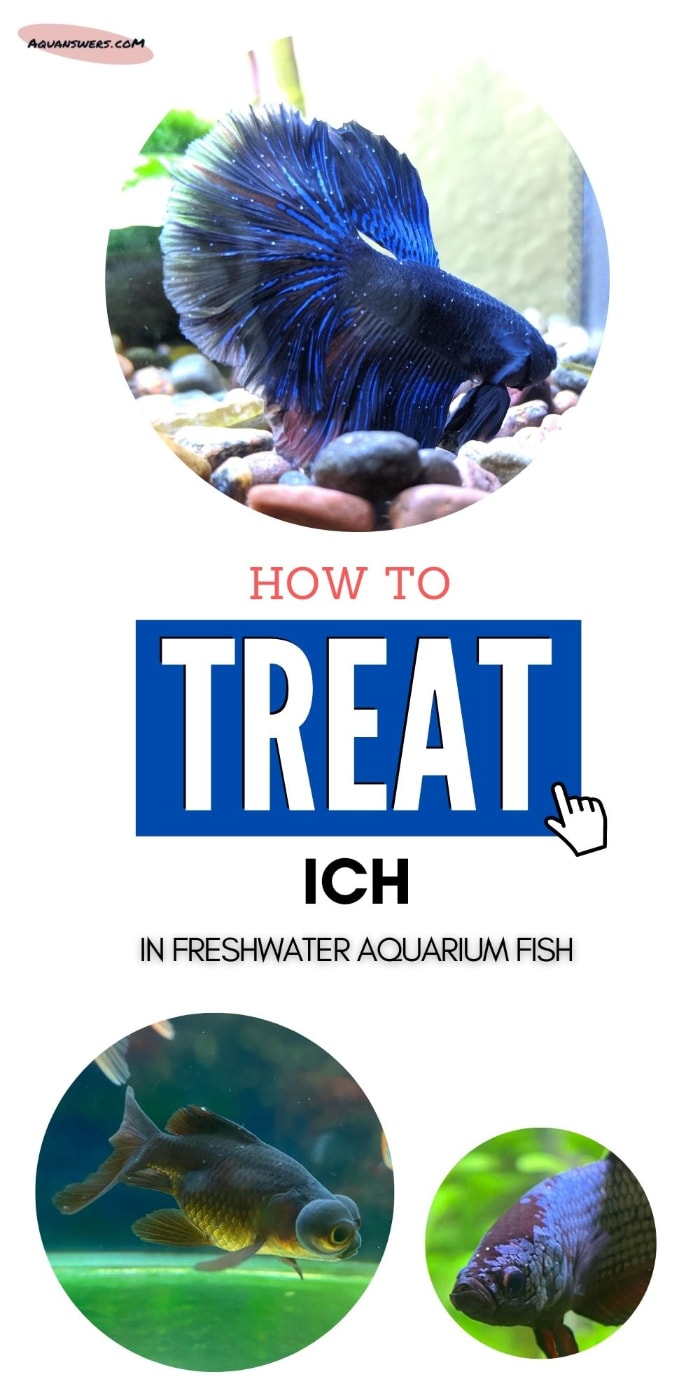
The next step after informing yourself is taking immediate action in order to prevent any fish from perishing. Head to the store and stock up on everything you need or just order it online, while waiting for the temperature in your aquarium to slowly rise.
Though alarming, Ich can be straightforward to treat and there’s still hope for your freshwater fish.
Leave a comment below if you need additional answers, but do provide your aquarium’s water parameters.

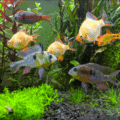

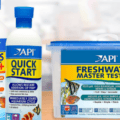

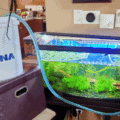
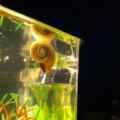

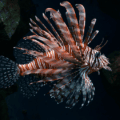


Thank you for the very important information as it seems as though many factors can cause ick.Currently have a 40 breeder,with 6 Bosemani Rainbow,9 Rummy Nose,and 4 Pepper Cory.Ick outbreak on the Rainbow Fish.Water parameters are 0 amonia 0 nitrite 0nitrate airstone Seachem Tidal 55 HOB for filtration live plants (Annubias,Compacta Swords,small amount of Java Fern)Driftwood.Tank was fully cycled.Do you think the tank is possibly overstocked and that the number of Rummy Nose is stressing out the Bosemani?Temperature is currently raised to 85.5 and added recommended amount of aquarium salt.Will run that temp for 10 days.Do you recommend any water changes for the 10 day period and should I add another dose of salt within the 10 day period or not?
Hey, thanks for reaching out! And sorry to hear your tank is going through a rough patch. Is your 40 gal a long rectangular shape or more tall? The reason I ask is because Bosemani do get pretty large, I have a pair right now in a 32 gallon and I am thinking of moving them to a larger tank probably with a few more as they do light to school in bigger groups. The plants you mentioned those are all good to have as it will break line of sight and help the fish feel more at comfortable. As for causes, has there been any fluctuations in temperature or do you see aggressive behavior within the tank that might cause stress, if so separation might be needed.
As for treatment, make sure you have plenty of aeration in the tank and slowly raise your temperature to low 80 degrees. Leave it at that temperature for about a month and do frequent gravel vacuums and water changes. That will get rid of the ick. Depending on severity though you may want to try some ick medication to dose the tank as the medication typically act faster. Since you mentioned it has only impacted the Bosemani and not their other tankmates this might mean their immune system is a bit weak so feed a bit of minced fresh garlic.